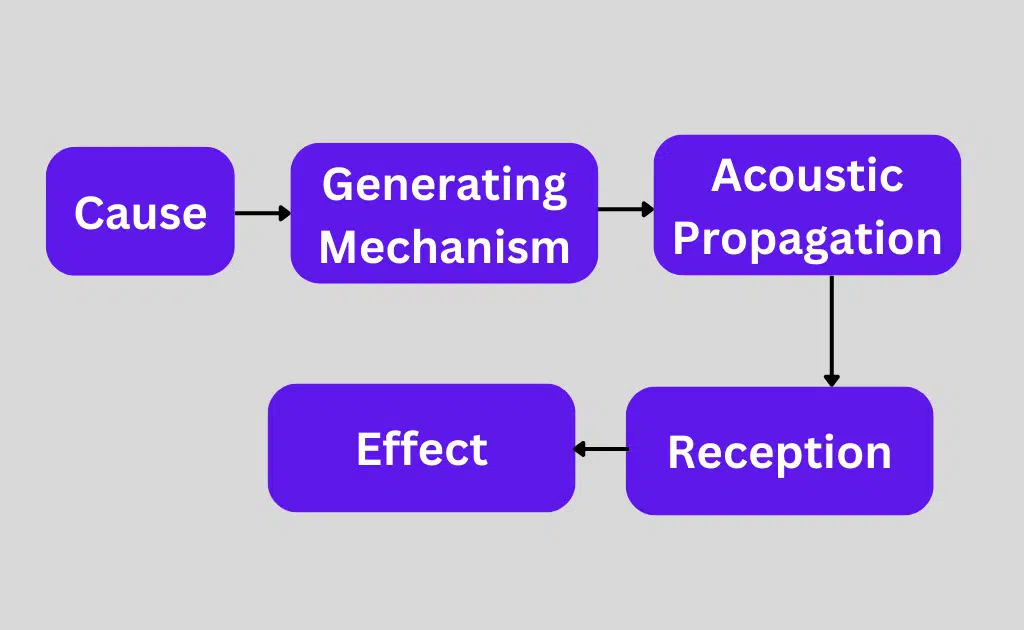Acoustics-Definition, Types, And Applications
Acoustics is a branch of physics that is related to the science of sound. The studies of mechanical waves in gases, liquids, and Solids are dealt with. It deals with the vibration of the surge in fluids and gases.
What is Acoustics?
The production, control, transmission, reception, and effects of sound are some of the sciences concerned with acoustics. The Greek acoustics meaning “heard” is what the term is derived from.
An acoustician or an acoustical engineer who works in the field of acoustics studies sound.
Acoustics is the study of how sounds are made and can be used to enhance the quality of a musical or vocal performance.
It’s achieved by reducing sound barriers and increasing the factors that help in the proper transmission of sound waves.
Acoustics is a branch of science that deals with the behavior of sound. It has been used in many industries such as the audio industry.
The generation, propagation, and reception of mechanical waves and vibrations are studied in the study of acoustics.

In any process or event, the steps shown in the above diagram can be found. There are many different causes, both natural and voluntary. A sound wave can be produced from a variety of transduction processes that convert energy from some other form into sonic energy.
There is one fundamental equation that describes sound wave propagation, the acoustic wave equation, but the phenomena that emerge from it are varied and often complex. The propagating medium carries energy from a wave to wave.
Once again, this energy is transduced into other forms, in ways that may be natural and/or contrived. The final effect may be a purely physical one or it may reach far into the biological or volitional domain.
Whether we are talking about an earthquake, a submarine using sonar to locate its foe, or a band playing in a rock concert, the five basic steps are equally effective. Waves propagation is the central stage in the acoustical process.
This falls under the purview of physical acoustics. Sound propagation is mostly a pressure wave in fluids. Longitudinal waves, transverse waves, and surface waves are some of the forms of mechanical waves that can be found in solid objects.
The first thing acoustics looks at is the pressure levels and frequencies in the sound wave and how it interacts with the environment. This interaction can be described as either a reflection, interference, or a mix of the three. Reorientation can also occur if there are several media present. Reduction processes are of special importance to acoustics.
Types of Acoustics
There are some important types of acoustics.
Archaeoacoustics
Archaeoacoustics is a field of archaeology and acoustics that studies the relationship between people and sound throughout history. A discipline that combines archaeology and computer simulations to research and understand ancient music.
Aeroacoustics
Aeroacoustics is the study of noise generated by air movements, such as turbulence and the movement of sound through the fluid air.
To study how to quieten aircraft, acoustical engineers apply knowledge in the field of acoustics. Aeroacoustics is important for understanding how wind musical instruments work.
Environmental noise and soundscapes
Environmental acoustics is about noise and vibration that comes from different sources. It’s aimed at reducing noise and vibrations from many different sources.
Soundscape research is starting to investigate how sound can have a positive impact on people’s mental and physical well-being in the context of the urban environment.
Ultrasounds
A sound with a Frequency greater than the audible limit is called ultrasound. There isn’t a difference in the physical properties when compared to normal sound. In a lot of fields, it is used with sputum. Ultrasonic devices can be used for measuring distances and detecting objects. In physics, it’s used to image the insides of the body.
Psychoacoustics
Many studies have been conducted to understand the relationship between acoustics and cognitive, or more commonly known as psychoacoustics, in which what one hears is a combination of perception and biological aspects.
Applications of Acoustics
The branch of science known as acoustics finds its application in almost every field. There are a number of prominent applications of acoustics.
- Music
- Medicine
- Warfare
- Architectural industries
- Geologic
- Noise control industries
- Detection of petrol under the Earth
- Detection of earthquakes
- Study underwater and atmospheric phenomena







Leave a Reply